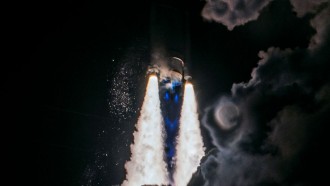Russians are aiming to be the first to send animals to Mars, and are training monkeys to be ready for a mission to the red planet by 2017.
Russian scientists have been working on training monkeys three hours a day in preparation for the possibility of sending them on space missions. Training was held everyday at the Institute of Biomedical Problems in Moscow, where four rhesus macaques are being taught to use a joystick to hit specific targets indicated by a cursor. If the monkeys are successful, they are rewarded with a sip of juice.
The monkeys were selected based on their cognitive thinking skills and learning abilities.
"What we are trying to do is to make them as intelligent as possible so we can use them to explore space beyond our orbit," said Inessa Kozlovskaya, the leader of the team responsible for teaching the monkeys.
Once the monkeys are successful in learning how to operate the controls, the next phase would involve solving simple mathematical problems and simple puzzles. The scientists are hoping that the animals will be ready to perform tasks related to their mission for space by 2017.
There is a long history of animals taking part in space missions. Long before humans made it to space, the US and Russia have been using animals in order to test how long a living organism can go outside Earth and return safely.
One of the first monkeys to be launched into the cosmos, Albert I, a rhesus monkey, was onboard a V-2 Blossom on June 1948. He and his predecessors, Albert II, III and IV all unfortunately died on impact. It will be years later, on 1951, when a monkey named Yorick would become the first monkey to live through a space flight.
Even after that bit of success, survival rates of animals on space remained relatively low for a long time. This, and the way animals are trained and handled for space missions, is what greatly bothers animal activist groups.
Members of the People for the Ethical Treatment of Animals (PETA) pointed out that space missions are already difficult for humans, which makes it even more so for the animals that don't have a clue of what they're really doing.
"They're being strapped down into these capsules. It's terrifying for them," said Justin Goodman, director of lab investigations at PETA. "They don't understand what's going on."
Even until now, NASA is continuing to study how humans can handle long term space travel on humans. The agency hopes that the findings of these studies will help the US land on Mars by 2030.









